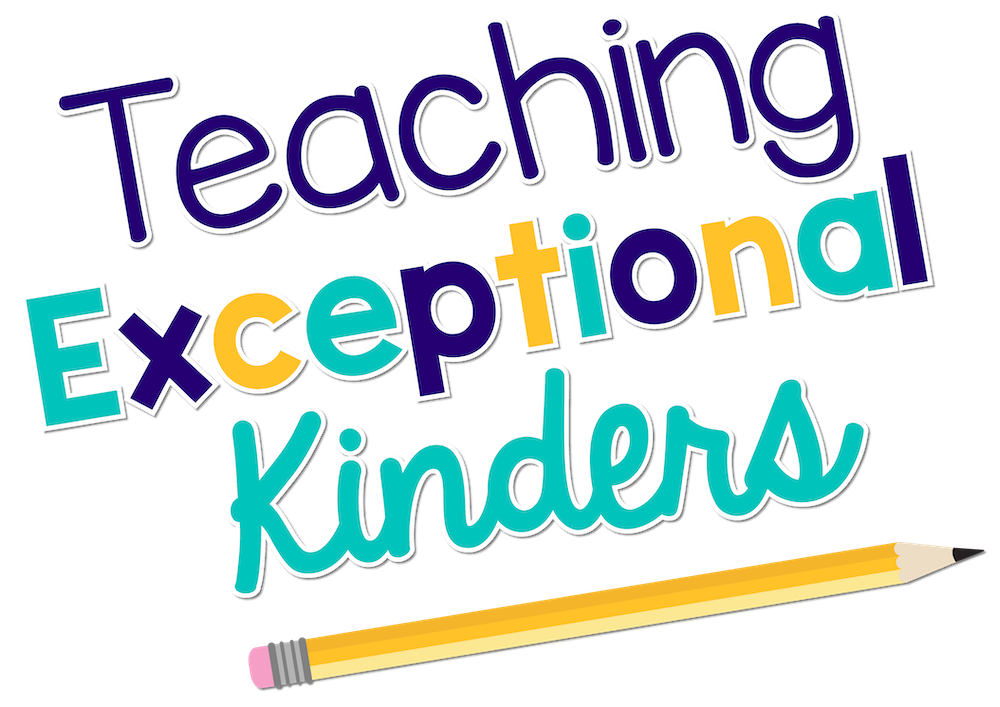The Power of Social Stories for Kindergarten
The simple power of a well-written social story can transform classroom behavior for an individual student and also your entire class! In this post, I’m going to share my best tips for creating effective social stories for kindergarten. This simple tool can have a huge impact on your behavior management as you teach students important skills that will help them for years to come.
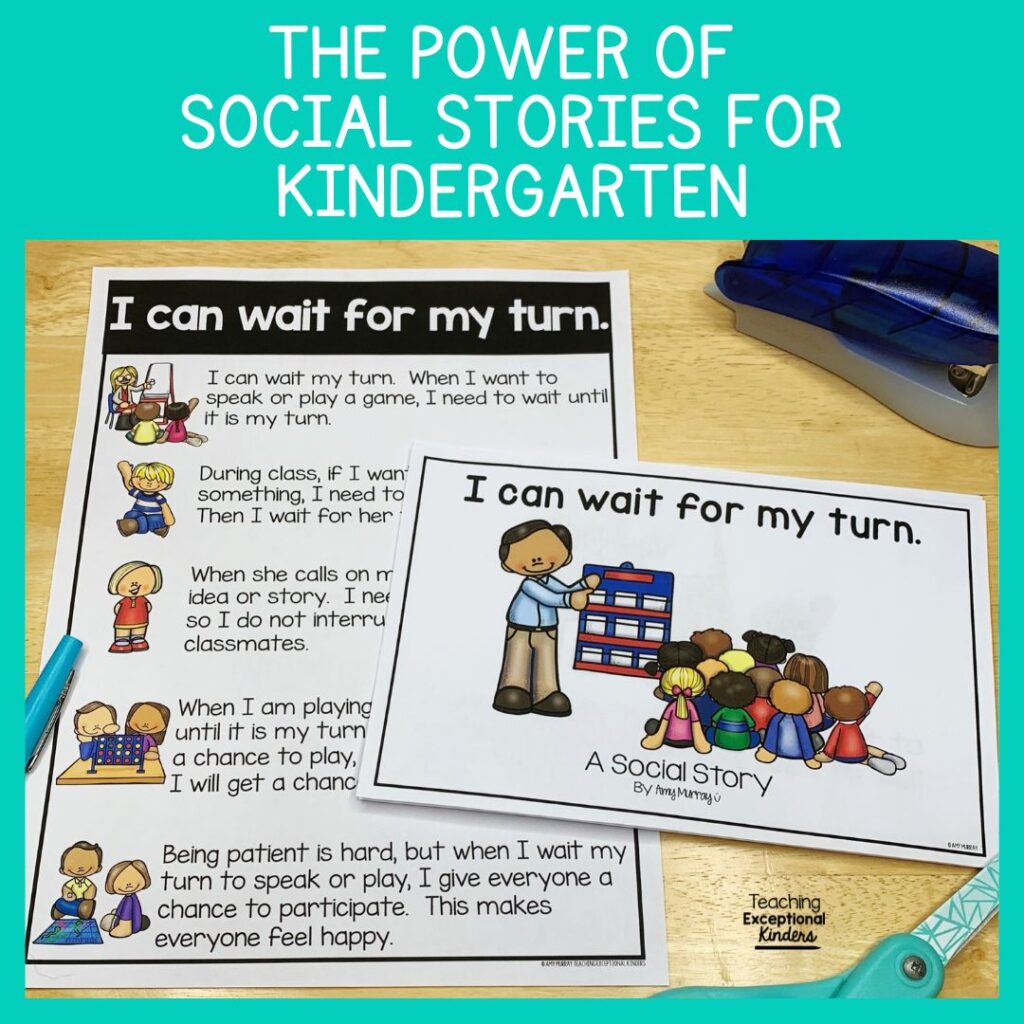
What is a Social Story?
A social story is a simple tool that gives students a script that they can use to help them navigate various situations throughout the school day. These might be situations related to the cafeteria, playground, classroom learning routines, self-regulation, and more. There really can be a social story for any situation! The goal of a social story is to help students make appropriate decisions at school when they find themselves in a situation where it’s difficult for them to make that choice.
No matter what the social story, there are a few components that you should always include when writing a social story for a kindergarten student:
First-Person Language
Remember, a social story is a script that we want students to internalize, so it should be written in first-person language. Rather than being told what to do by someone else, a social story can become an affirmation of sorts: “I will wait my turn,” “I won’t call out,” and so on.
One Target Behavior or Situation
A social story needs to be simple! It should focus on one specific behavior or situation that you’d like the student to review. For example, you might focus on the behavior of calling out in class. This is a behavior that you’d like the student to extinguish, so you can create a social story about this behavior.
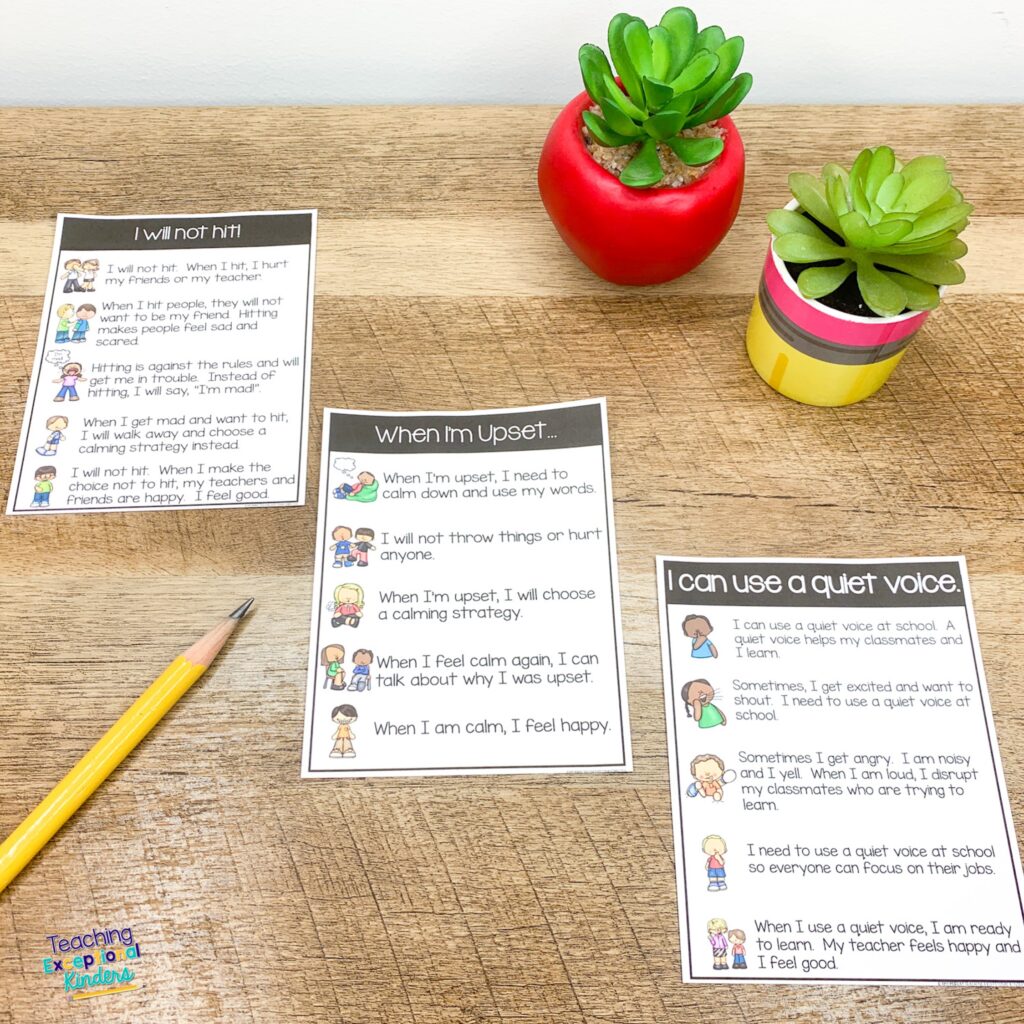
Describe the “What” and the “Why”
The next component of a good social story is to describe what you want the student to do. In the example of our social story about calling out in class, you would describe the replacement behavior of raising their hand to speak. In some cases, a social story might include more than one option for a replacement behavior.
However, it’s also important to describe these positive choices in situations that are typically challenging for the student. Does the student only call out after they have raised their hand and don’t get called on? The social story should include a description of the target behavior in this context. It makes the social story more meaningful for the student.
Speaking of a meaningful social story, it’s also important to include the “why” behind the target behavior. The story can mention what happens when they call out in class and the impact it has on their learning and the learning of those around them.
The Best Format for a Social Story
Once you have figured out what you want to include in the text of the social story, it’s time to print it off in a format that works best for your student!
A printable booklet is a great option to grab a student’s attention. It’s like their own personal book that they can flip through and experience as an actual story.
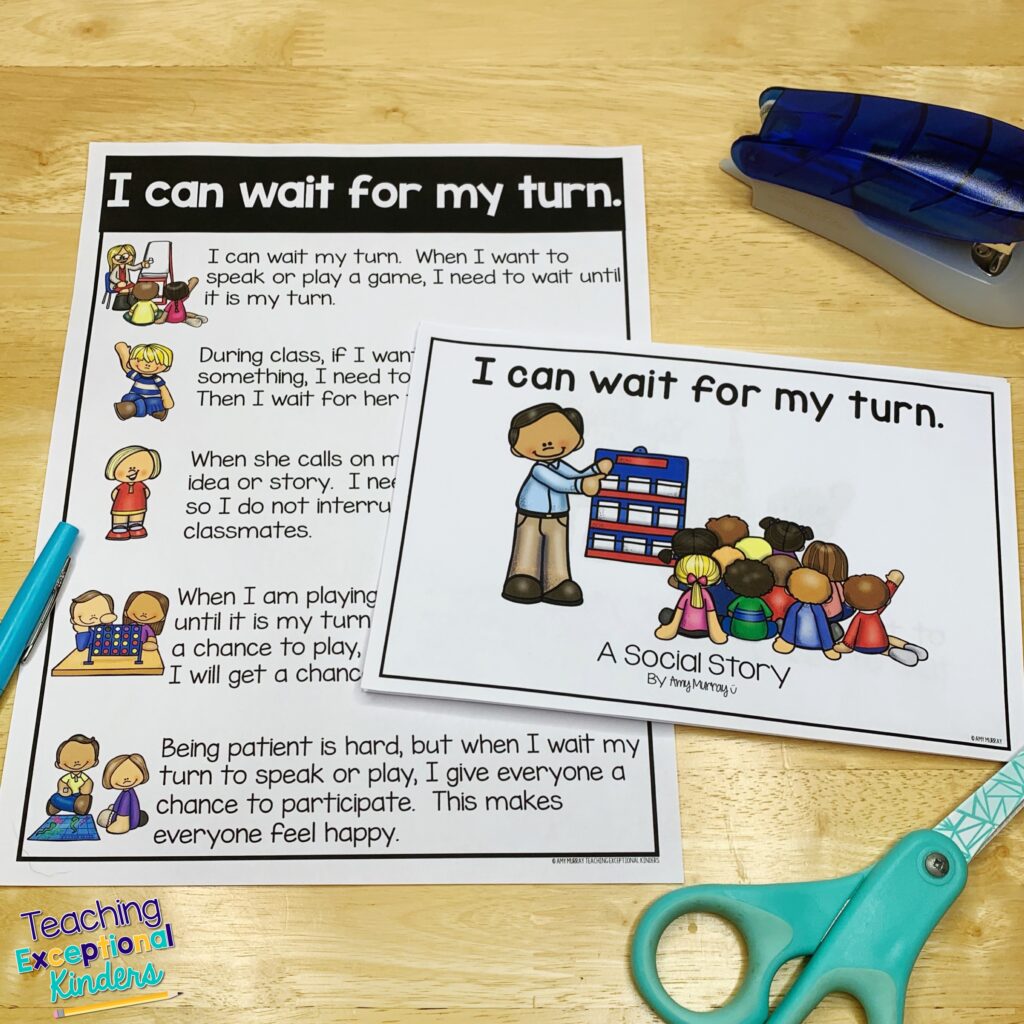
You can also print off the entire script of the social story onto one page. This makes it very portable and easy to reference throughout the school day. For even more flexibility, you could print off the one-page social story at a smaller scale to attach it to the student’s desk, cubby, or wherever it would be helpful to place it.
To get your student more involved and invested in their own social stories, you could print off the social story in black and white. The student could then color in the images to help them take more ownership of the story. You could also choose to take pictures of the actual locations referenced in the storyl to help your student better understand the content of the social story.
How to Use a Social Story in Kindergarten
Now that you have your social story written, printed off, and ready to go, it’s time to put it to work! The most important thing to remember about a social story is that it is not effective if it’s only read sporadically. You can’t just have it sitting on a shelf to read with a student in the actual moment they are having trouble with the situation!
A social story is more of a preventative tool. You should read it daily with the student until it has clearly become an internal script for them. You’ll notice this progress when specific situations arise and it is clear that the student is using the strategies described in the social story. When this happens, you can taper off how often you review it.
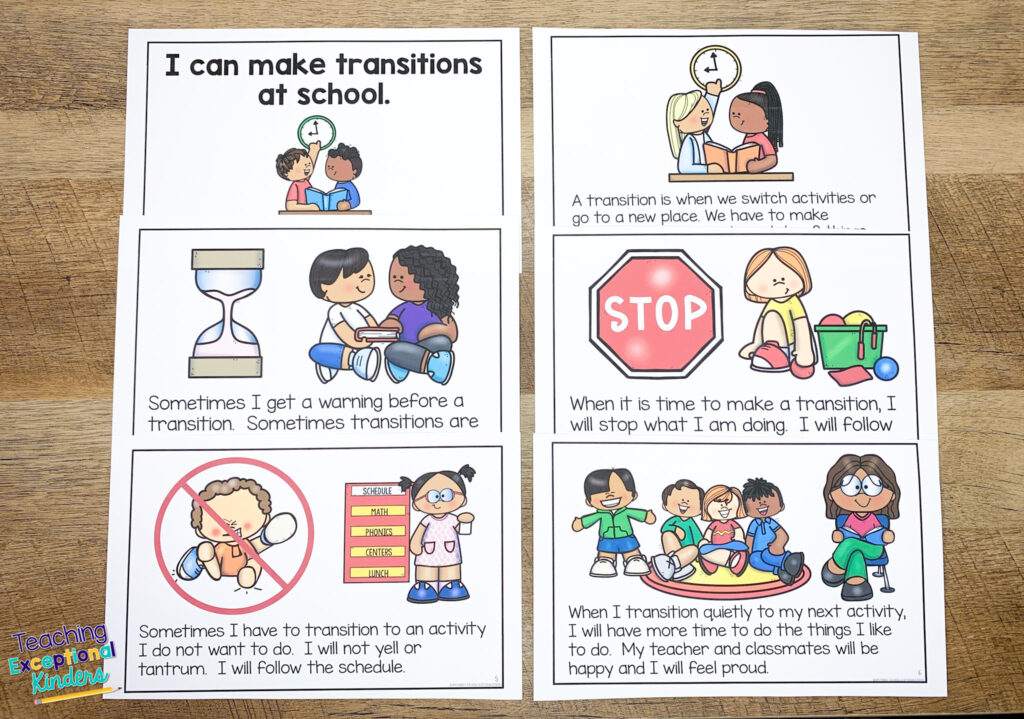
You can also use a social story for a group of students! Does your entire class have trouble lining up for recess? Write a social story to describe the desired behavior and the why behind it! Review the social story before you transition to your first recess of the day.
Check out this video for even more tips about how to use social stories in kindergarten! (Be sure to subscribe to my YouTube channel if you like these quick tips for kindergarten teachers.)
Free Kindergarten Social Story
If you would like to see the power of social stories for yourself, I have put together a freebie for you to try! This social story addresses the behavior of calling out in class. The freebie includes both the booklet and one-page format and it also comes in full color and black-and-white options. Just fill in your information below and I’ll send this free social story directly to your inbox!
Save These Tips for Using Social Stories for Kindergarten
Be sure to save this post if you’d like to come back to it later. Just add the pin below to your favorite teaching board on Pinterest. You’ll be able to quickly find these tips whenever you’re ready to try using social stories in your kindergarten classroom.
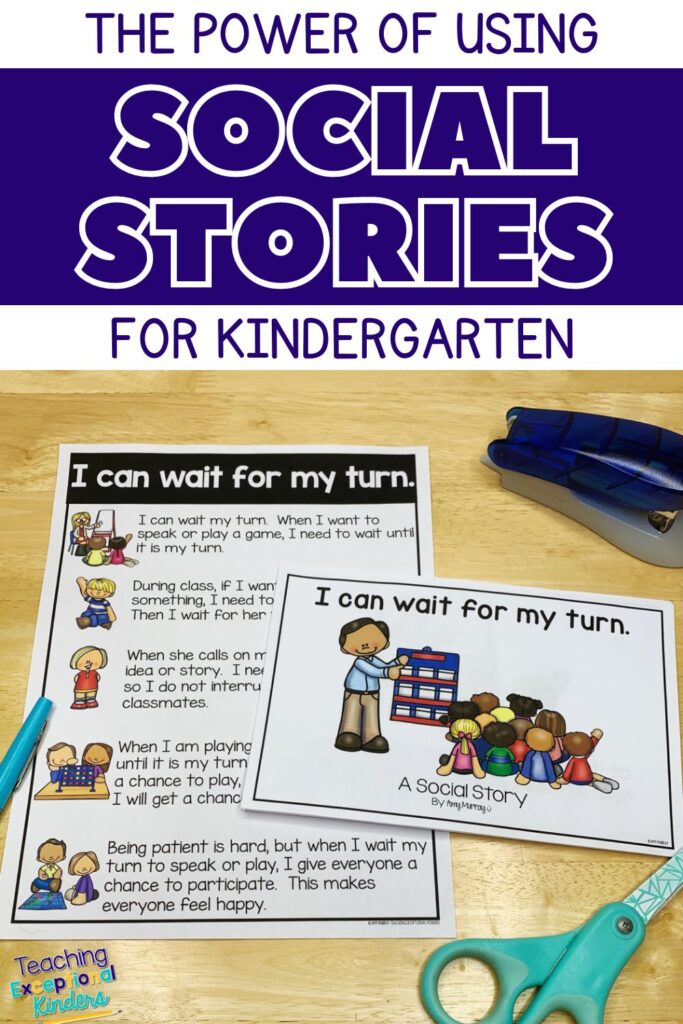
Amy
SITE DESIGN BY LAINE SUTHERLAND DESIGNS

